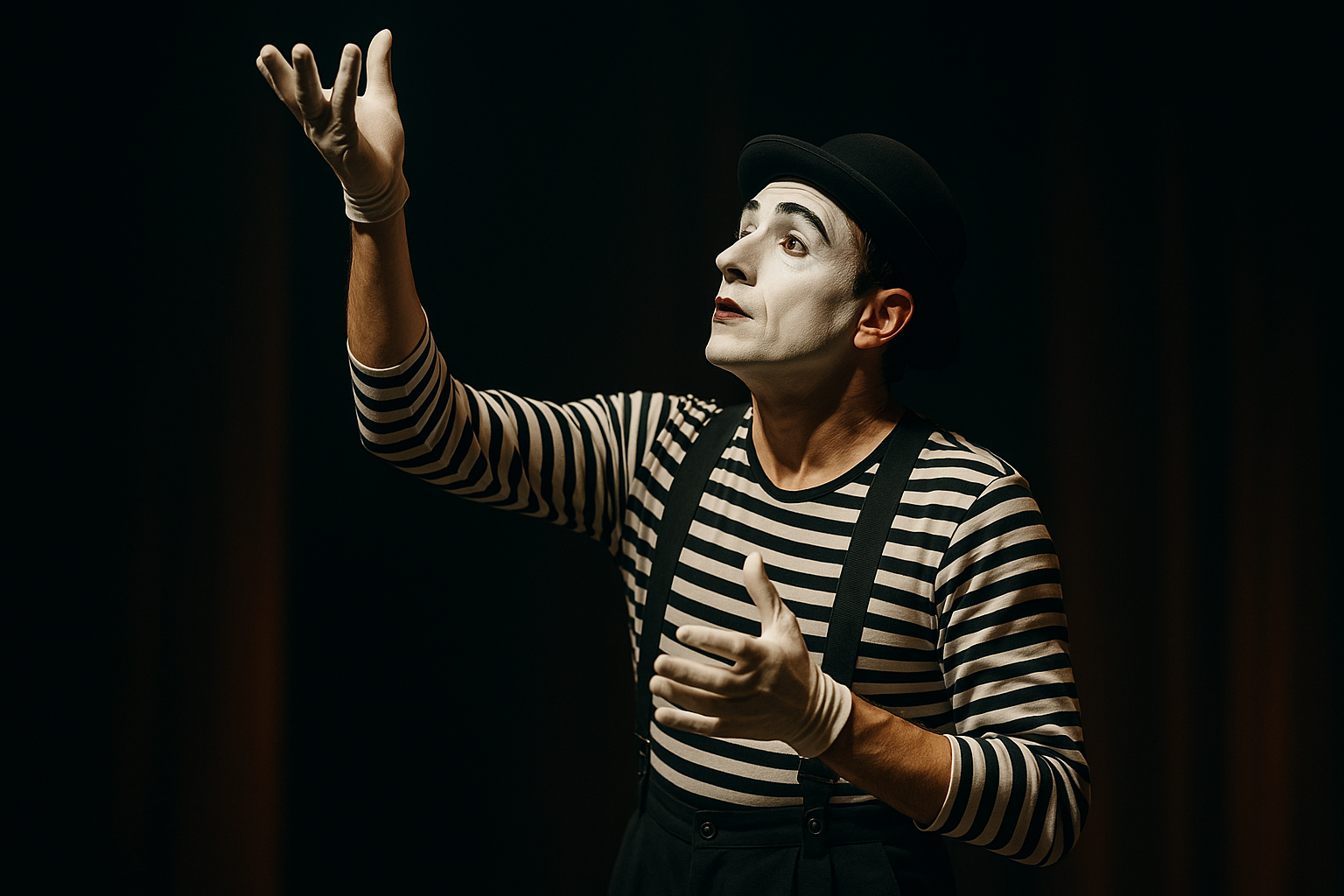Pantomime Performance: Breathing New Life into Silent Artistry
Step into the hushed world of mimed theater, a realm where silence speaks volumes and artists convey their stories without uttering a word. This article delves into the rich history of pantomime, its recent resurgence, and the impact it has on today's performing arts scene.

The Historical Canvas of Pantomime
Pantomime, derived from the Greek words ‘panto’ meaning all and ‘mimos’ meaning imitator, is a creative form of expression that relies on physical movements and gestures over spoken dialogue. Its roots stretch back to ancient Greece, where performers used exaggerated body language and masks to portray different characters and emotions. Over the centuries, it has evolved and shaped itself with cultural influences from Roman mimus, Italian Commedia dell’arte, and British Harlequinade, each contributing unique elements to its repertoire.
Re-emergence in the Contemporary Arts Scene
In recent years, pantomime has witnessed a resurgence in popularity, carving a distinct niche in the modern arts landscape. Amidst an era of noise, both literal and digital, the silent art of pantomime offers a refreshing contrast. Renowned mime artists like Marcel Marceau and his character “Bip” have played a significant role in revitalizing this art form, demonstrating the power of silence in an increasingly verbose world.
The Impact and Reception of Pantomime Today
Pantomime’s resurgence has brought a renewed appreciation for non-verbal communication in the arts. It challenges traditional theater norms, pushing boundaries by communicating complex narratives and emotions without dialogue. This has prompted a shift in audience perception, encouraging them to engage more actively in interpreting the performance. Critics, too, have lauded the renewed focus on this silent artistry, recognizing its depth and dynamic potential.
The Significance of Pantomime in the Arts Industry
Pantomime’s resurgence is more than just a revival of an ancient art form. It’s a testament to the enduring power of non-verbal communication and the versatility of theatrical expression. By stepping away from dialogue-heavy performances, pantomime encourages artists to explore innovative storytelling techniques and audiences to perceive narratives differently.
The Future of Pantomime
As we look ahead, pantomime’s future seems promising. Emerging mime artists continue to push the genre’s boundaries, blending traditional mime techniques with contemporary performance art. With its unique ability to transcend language barriers, pantomime holds the potential to become a truly global form of creative expression, uniting audiences across cultural divides.
In conclusion, pantomime, with its roots deep in history, has found its voice in silence and continues to breathe new life into the arts industry. Its resurgence reminds us of the power of simple, non-verbal communication, and its impact is likely to resonate in the arts scene for years to come.






